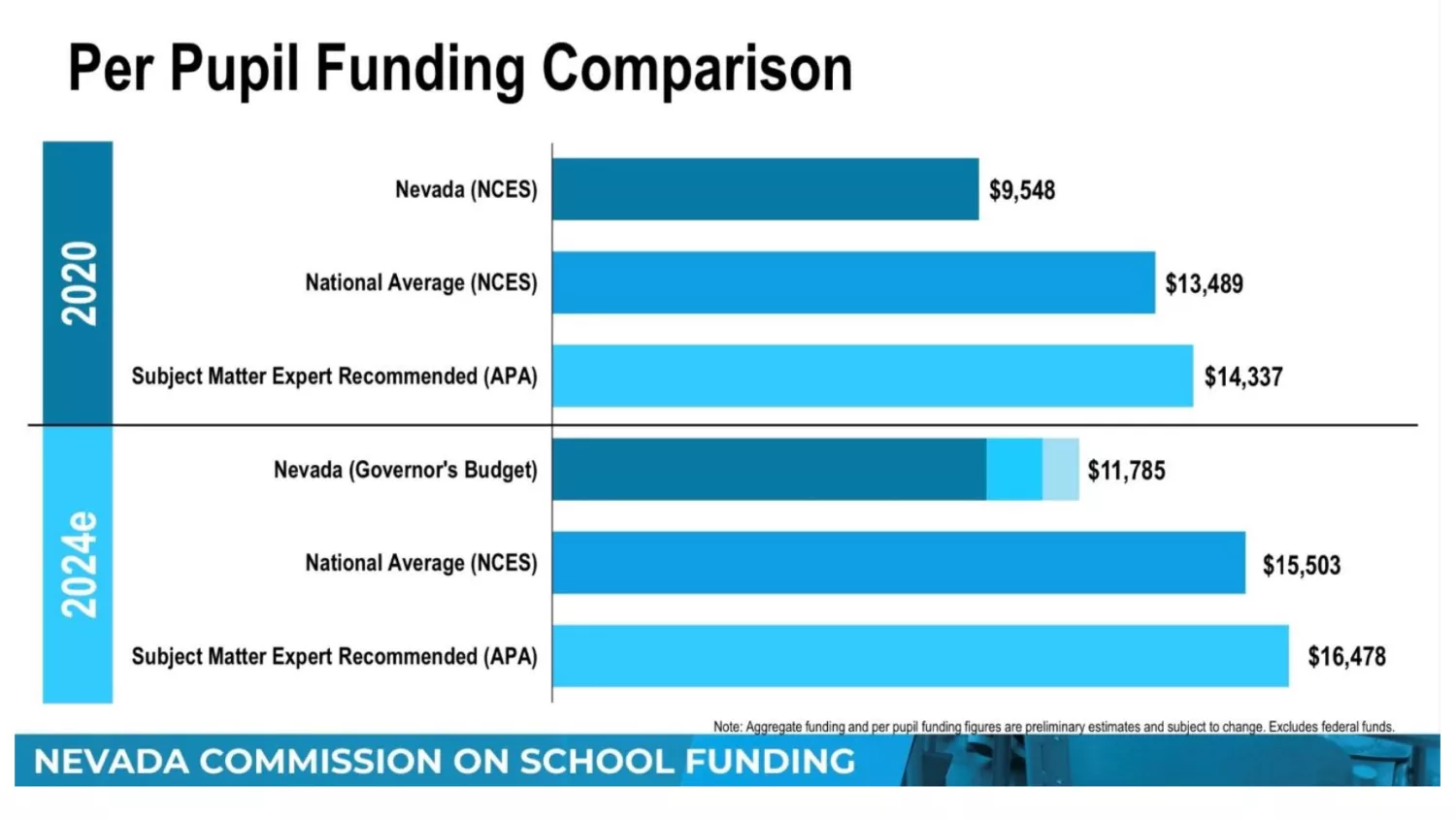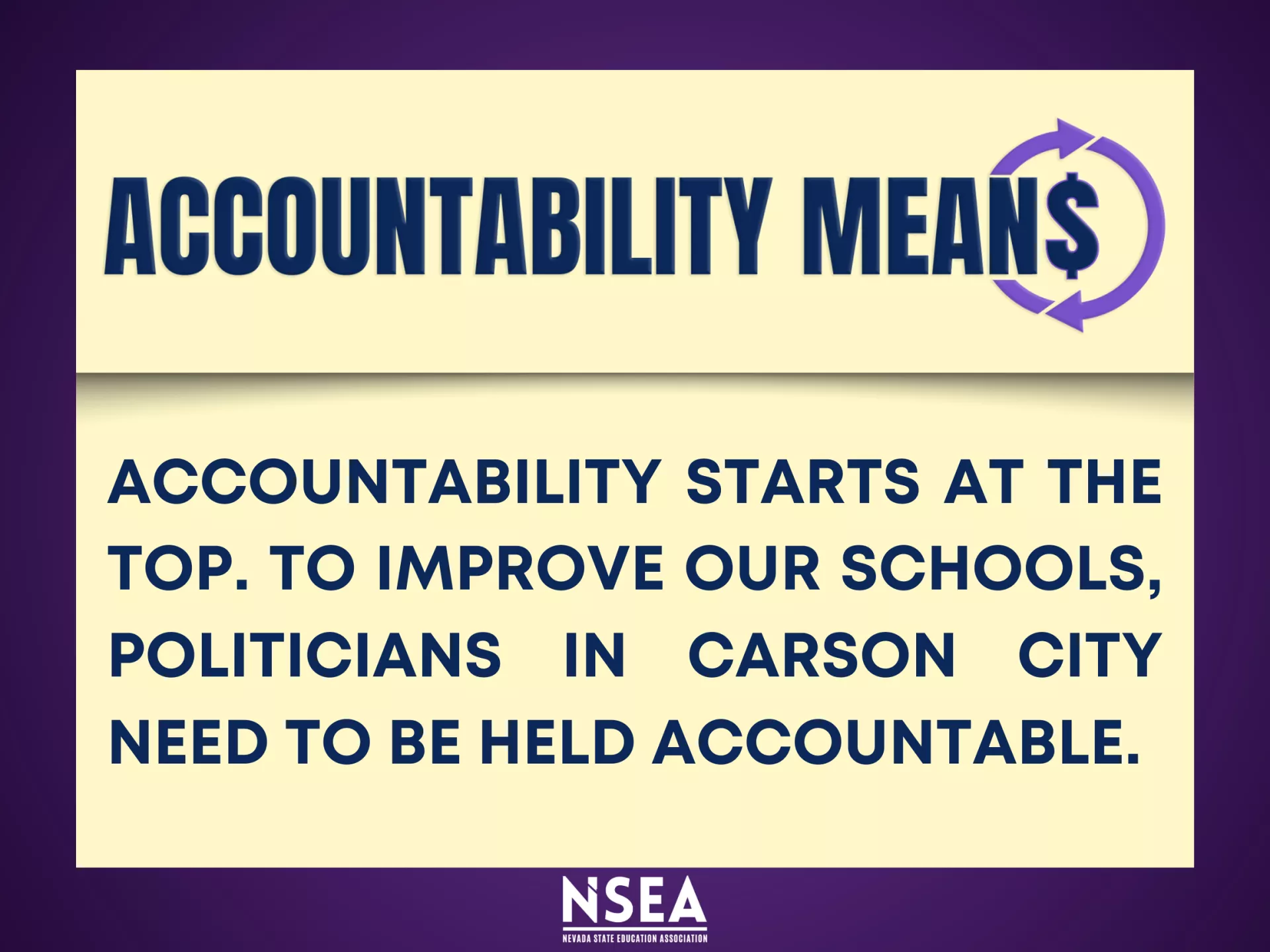For decades, Nevada severely underfunded education, while educators in districts struggled to hold it together. Then the pandemic hit and exposed and worsened the crisis in Nevada schools. Low pay and morale resulted in a record number of educator departures. Already overcrowded classrooms were doubled and tripled up. Bus routes were canceled, stranding students for hours. Educators across the state called out for help.
A year ago, NSEA launched Time for 20 for a 20% raise, at least $20/hr for those who make schools run, and average class sizes of 20 students— what educators believe is needed to give schools a chance to succeed.
We brought this campaign to state political leaders who responded saying they supported raises for educators but didn’t know how Nevada would pay for it. At the same time, Nevada was already amassing record, 9-digit reserves. (We even pointed that out then.) So, while school operations were imploding and with educators calling for help, elected leaders responded by saying Nevada couldn’t afford it, even though they were already sitting on hundreds of millions of dollars in reserves!
The Governor’s budget proposal increased education funding by $1B per year. That sounds great, except it is only one side of the coin. Since FY20, per-pupil funding has remained relatively flat and inflation has skyrocketed, increasing more than 16%! What we spend on gas or eggs doesn’t just impact the family pocketbook, it also hits school districts. So most of that billion-dollar increase for schools will simply go to covering increased costs, not to supplement or improve education.
In 2019, the Legislature passed the new school funding formula and created the Commission on School Funding. They tasked the Commission with studying what it would take to reach optimal funding and to make recommendations to get there in 10 years. The Commission released its report in November 2022 finding the state had to increase funding by about $3.4B per year to reach optimal in FY33. Those numbers are a snapshot in time and need to be adjusted to account for factors like continued inflation and to see how far the Governor’s budget proposal goes in closing Nevada’s funding gap. Commission Chair Guy Hobbs came to the Legislature last month to do just that. His most interesting slide compared per-pupil funding levels in FY20 with the Governor’s budget proposal for next fiscal year.

In the chart, you can see per-pupil funding going up by $2237. Most of that comes from the $1B increase next year. But when you compare the difference between those per-pupil amounts and optimal (APA) funding you can see the gap goes from $4789 in FY20 to $4693 in FY24, closing the gap by just $96 even with the additional $1B! If we can only close the gap by $96 in the best economic times, now what? What happens when things cool off?
When the Legislature created the Funding Commission, they charged it with making recommendations to raise the revenue necessary for Nevada to reach optimal funding. And the Funding Commission did just that— recommending the State raise revenue by expanding the base on the sales tax and closing property tax loopholes.
But we haven’t heard a word about these proposals since the report was delivered to the Legislature last year.
Democratic leaders started the session off with promise announcing an additional $250M for educator raises. Unfortunately, when the bill language was released in SB231, it fell woefully short. The bill literally leaves out thousands of workers who make our schools run. Folks like bus drivers, food service workers, custodians, and school secretaries. Due to a budget freeze impacting most school districts, the matching mechanism in the bill means raises wouldn’t reach all parts of the state.
And even for districts able to match, SB231 only settles for a 10% raise, not the call from statewide educators for 20%, and certainly not the 30% LAUSD and SEIU Local 99 agreed to last night.
The stated purpose of the hearings is to demand accountability from districts to ensure additional dollars lead to improved student achievement. But we’ve already seen how most new dollars are offset by increasing costs, and 3 districts won’t be seeing any increase at all. Superintendents are being brought back to Carson City to outline how they’ll spend new dollars, but they already did this in the November Commission report.
Responding to these hearing, NSEA has launched the #AccountabilityMeans campaign. We hope you will join us in demanding accountability from the very top, because the crisis in education won’t get fixed without it.
